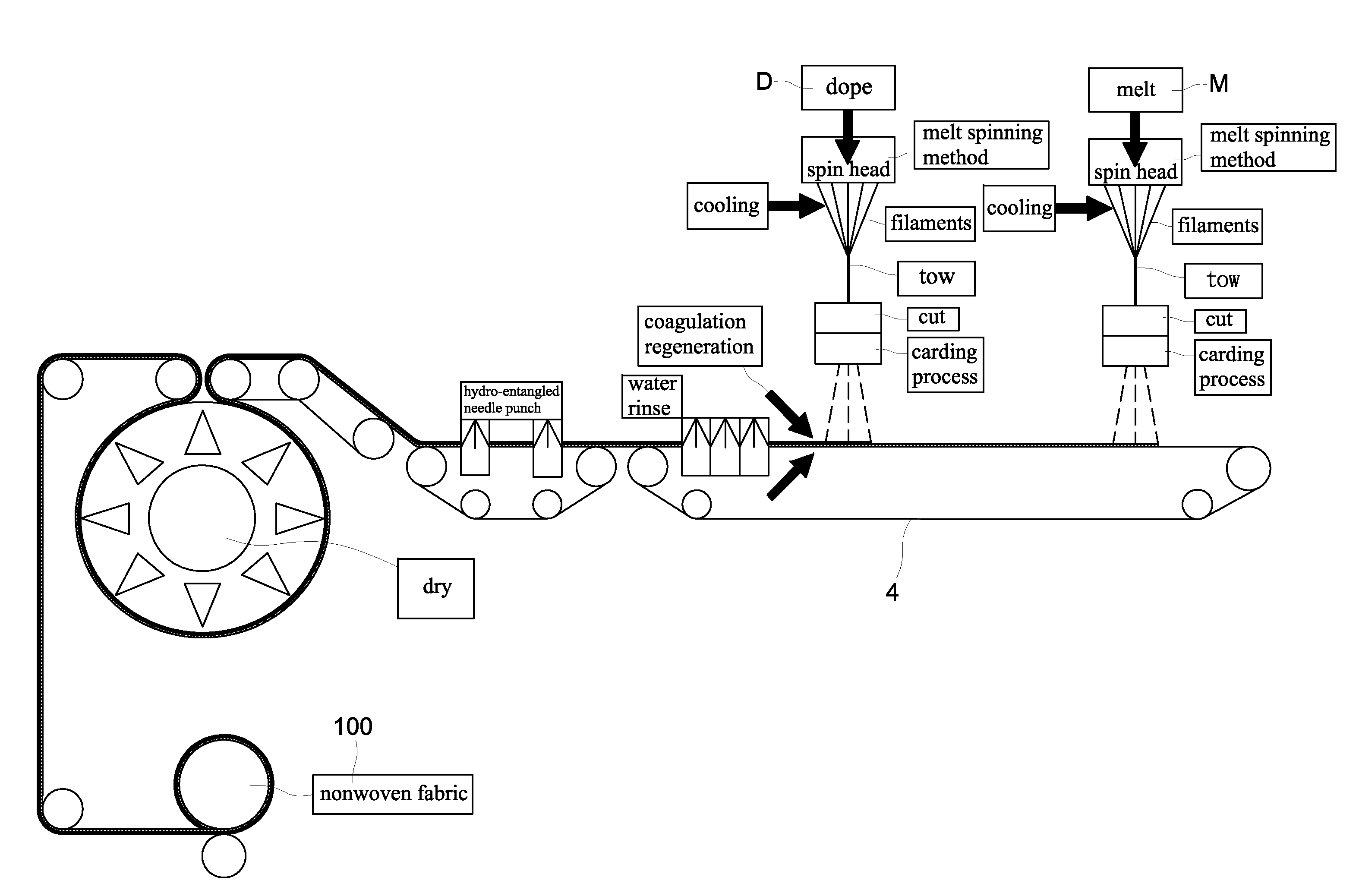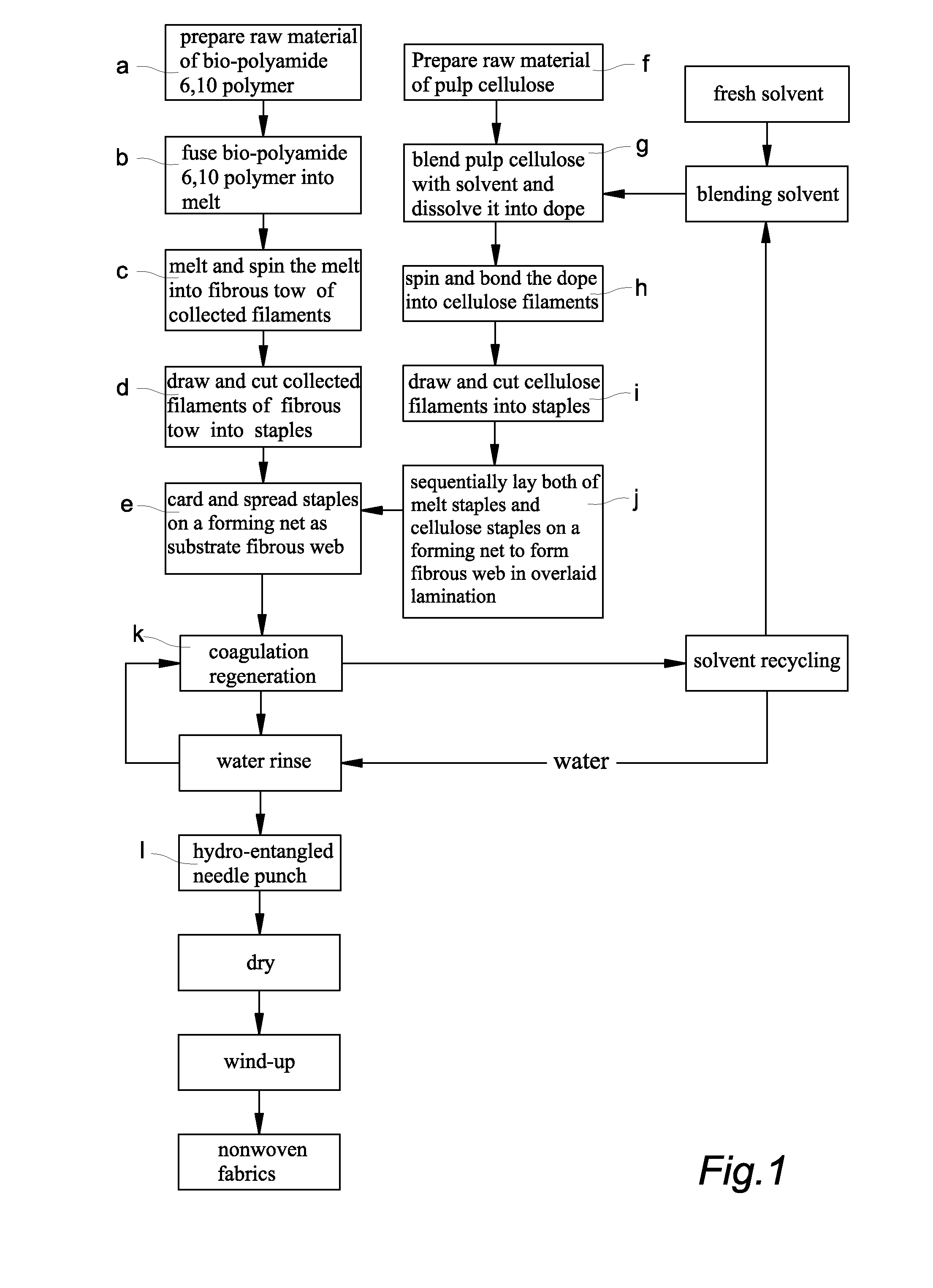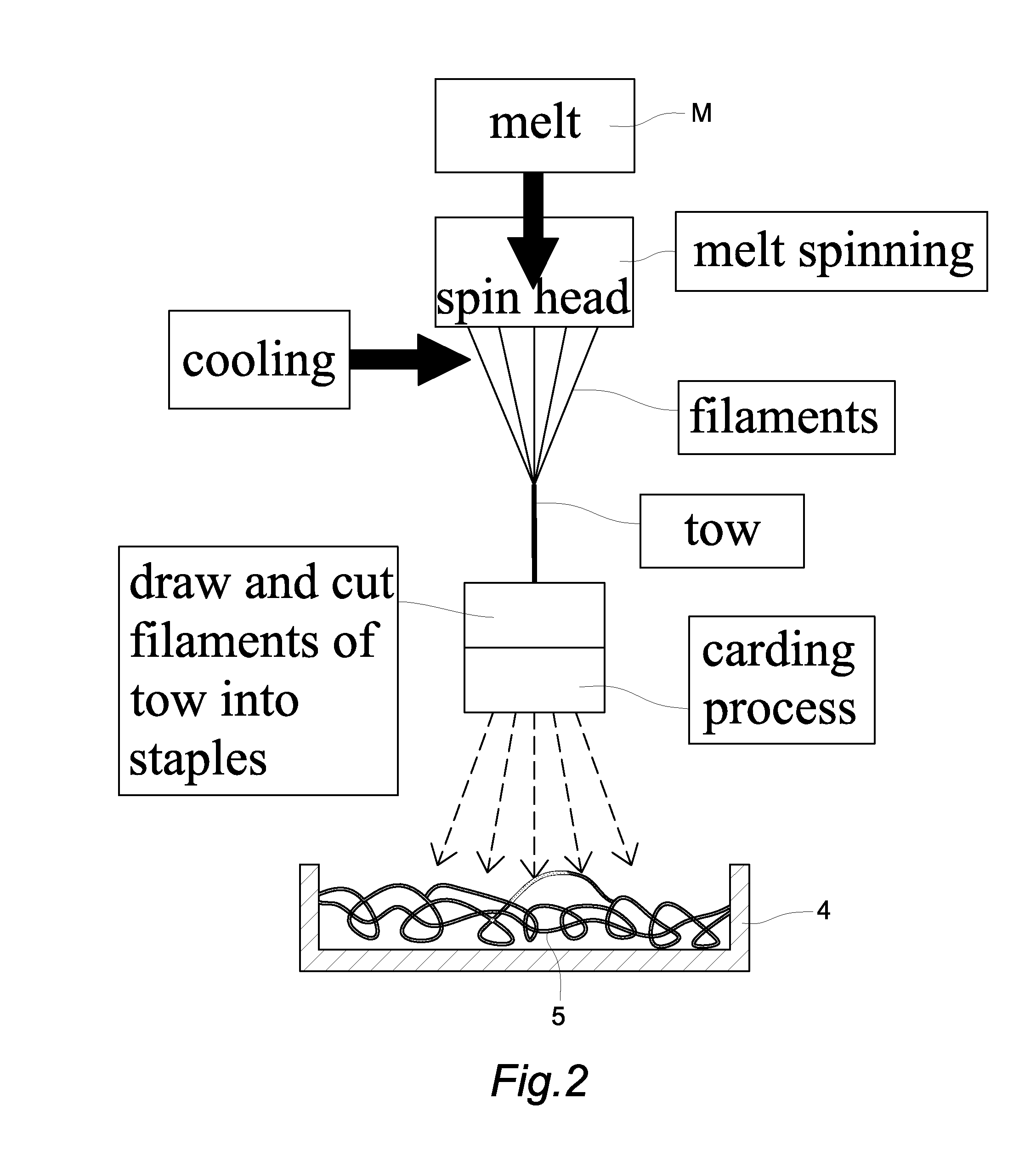Stapled melt spinning method for producing non-woven fabrics with hygroscopic metastatic feature
a technology of hygroscopic and metastatic features, which is applied in the direction of melt spinning methods, pattern making, needling machines, etc., can solve the problems of affecting the environmental impact of nonwoven fabrics, reducing the hygroscopicity of the hygroscopicity of the hygroscopicity of the hygroscopicity of the hygroscopicity of the hygroscopicity of the hygroscopicity of th
- Summary
- Abstract
- Description
- Claims
- Application Information
AI Technical Summary
Benefits of technology
Problems solved by technology
Method used
Image
Examples
exemplary embodiment 1
[0040]Firstly, via melt spinning method, fuse prepared macromolecule polymer of bio-polyamide 6,10 raw material into a melt of molten substance under high temperature at 280 degree centigrade (280° C.), via melt spinning method, extrude the melt out by an extruder with extruding quantity thereof is 300 c.c. / min, and the melt is forcedly spun out of spin heads into filaments, then external compressed quenching air of 20 degrees centigrade (20° C.) is continuously blown through for cooling and drawing the filaments into fibrous tow of bio-polyamide 6,10 by collecting means, and extend and cut the filament in the fibrous tow of bio-polyamide 6,10 into staple with fiber size of 10 um, then card and spread the staples of bio-polyamide 6,10 on a conveyer to form a substrate fibrous web of bio-polyamide 6,10; next, via melt spinning method, blend and dissolve prepared pulp in degree of polymerization 500 by putting N-methylmorpholine N-oxide (NMMO) dissolving solvent into prepared pulp und...
exemplary embodiment 2
[0041]Firstly, via melt spinning method, fuse prepared macromolecule polymer of bio-polyamide 6,10 raw material into a melt of molten substance under high temperature at 280 degree centigrade (280° C.), via melt spinning method, extrude the melt out by an extruder with extruding quantity thereof is 250 c.c. / min, and the melt is forcedly spun out of spin heads into filaments, then external compressed quenching air of 20 degrees centigrade (20° C.) is continuously blown through for cooling and drawing the filaments into fibrous tow of bio-polyamide 6,10 by collecting means, and extend and cut the filament in the fibrous tow of bio-polyamide 6,10 into staple with fiber size of 10 um, then card and spread the staples of bio-polyamide 6,10 on a conveyer to form a substrate fibrous web of bio-polyamide 6,10; next, via melt spinning method, blend and dissolve prepared pulp in degree of polymerization 500 by putting N-methylmorpholine N-oxide (NMMO) dissolving solvent into prepared pulp und...
exemplary embodiment 3
[0042]Firstly, via melt spinning method, fuse prepared macromolecule polymer of bio-polyamide 6,10 raw material into a melt of molten substance under high temperature at 280 degree centigrade (280° C.), via melt spinning method, extrude the melt out by an extruder with extruding quantity thereof is 225 c.c. / min, and the melt is forcedly spun out of spin heads into filaments, then external compressed quenching air of 20 degrees centigrade (20° C.) is continuously blown through for cooling and drawing the filaments into fibrous tow of bio-polyamide 6,10 by collecting means, and extend and cut the filament in the fibrous tow of bio-polyamide 6,10 into staple with fiber size of 10 um, then card and spread the staples of bio-polyamide 6,10 on a conveyer to form a substrate fibrous web of bio-polyamide 6,10; next, via melt spinning method, blend and dissolve prepared pulp in degree of polymerization 500 by putting N-methylmorpholine N-oxide (NMMO) dissolving solvent into prepared pulp und...
PUM
| Property | Measurement | Unit |
|---|---|---|
| temperature | aaaaa | aaaaa |
| degree of polymerization | aaaaa | aaaaa |
| temperature | aaaaa | aaaaa |
Abstract
Description
Claims
Application Information
 Login to View More
Login to View More - R&D
- Intellectual Property
- Life Sciences
- Materials
- Tech Scout
- Unparalleled Data Quality
- Higher Quality Content
- 60% Fewer Hallucinations
Browse by: Latest US Patents, China's latest patents, Technical Efficacy Thesaurus, Application Domain, Technology Topic, Popular Technical Reports.
© 2025 PatSnap. All rights reserved.Legal|Privacy policy|Modern Slavery Act Transparency Statement|Sitemap|About US| Contact US: help@patsnap.com



